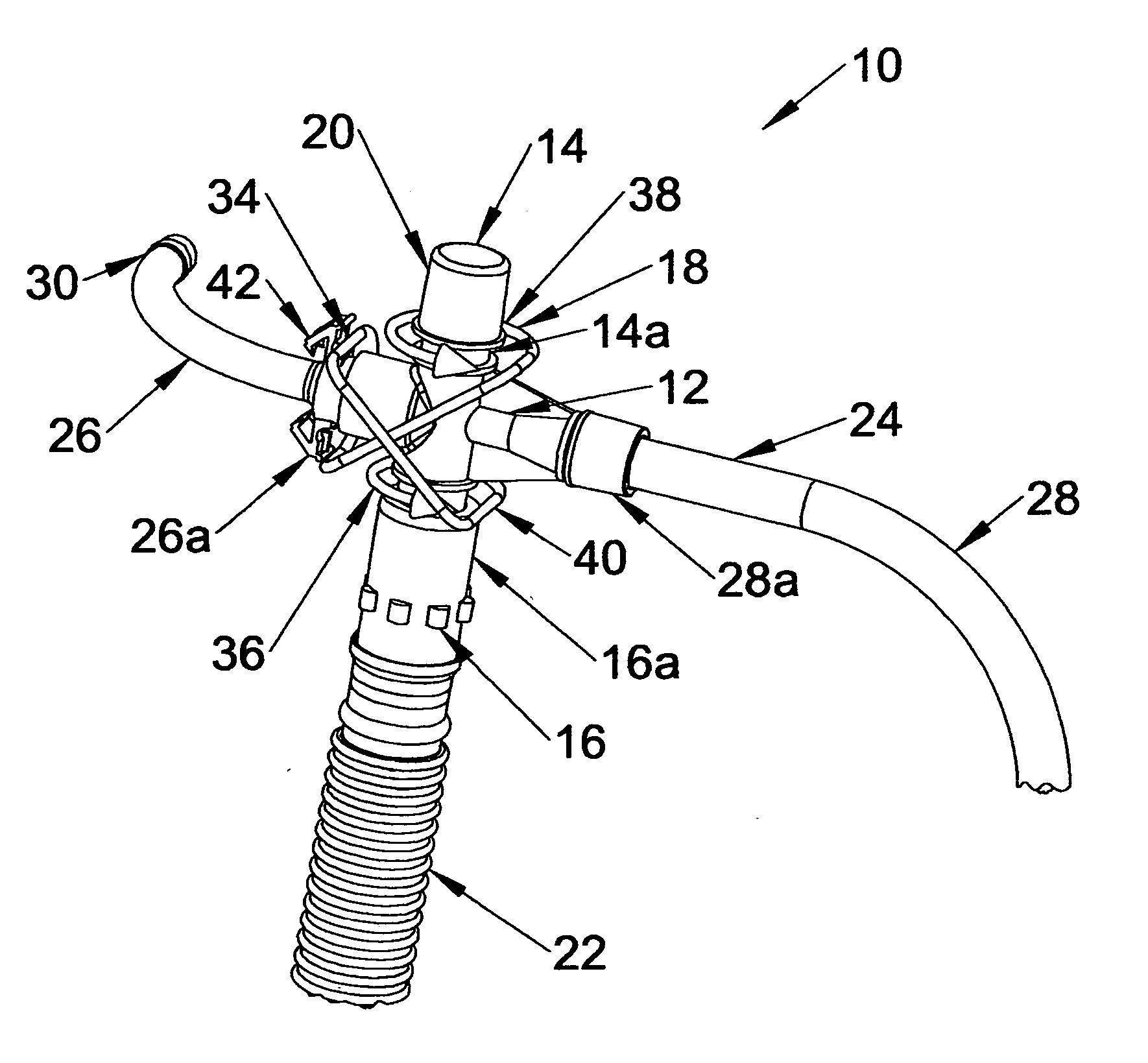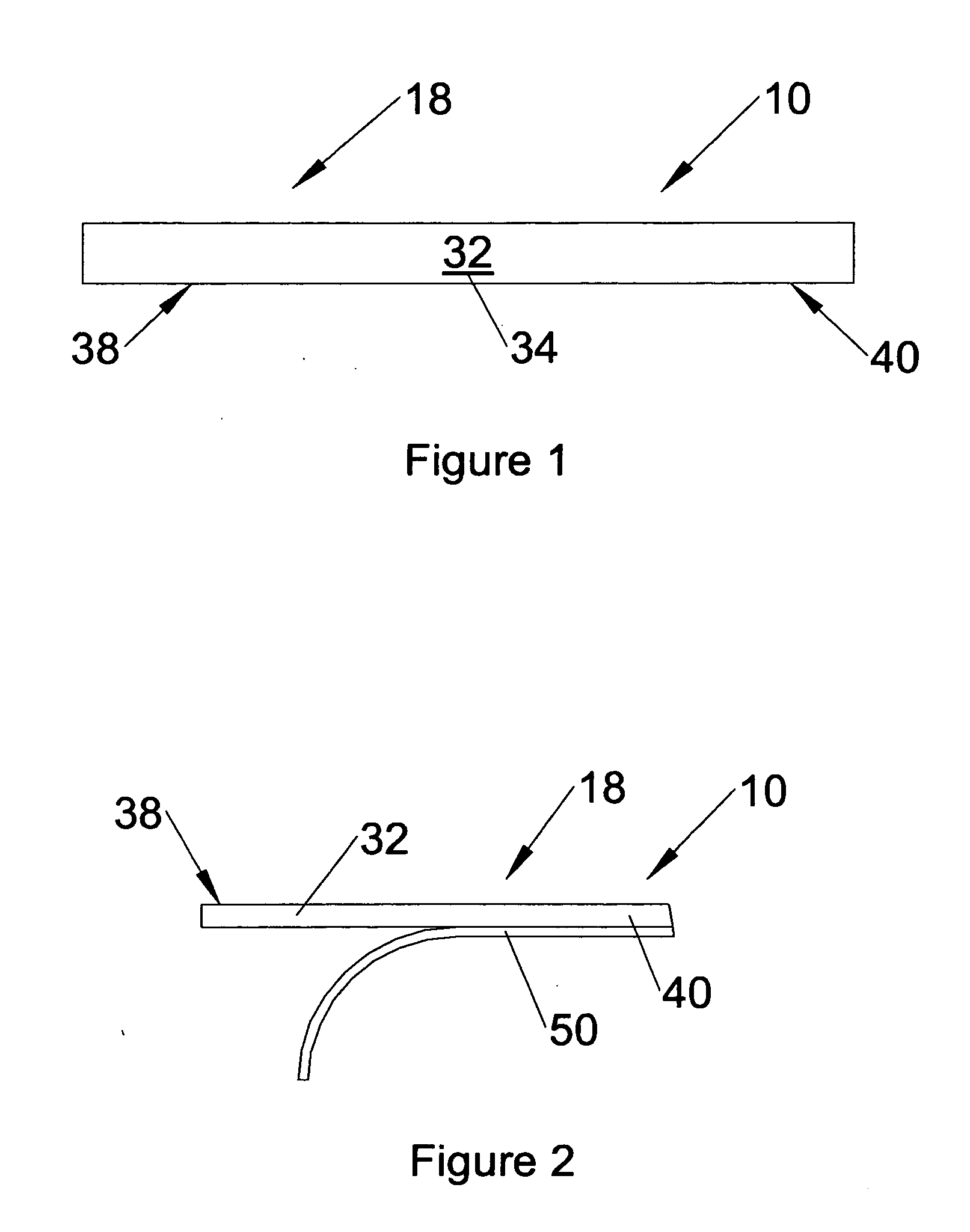Device affixing tubes to a cannula
a technology for affixing tubes and cannulas, which is applied in the field of medical cannulas, can solve the problems of forming poor seals, weakening or degrading the manners of affixing tubes, and cannulas, etc., and achieves the effect of reducing human labor and materials, and not subject to weakening or degradation
- Summary
- Abstract
- Description
- Claims
- Application Information
AI Technical Summary
Benefits of technology
Problems solved by technology
Method used
Image
Examples
Embodiment Construction
[0016]The present invention is a medical device 10 and may include a cannula 12, first tube 14, second tube 16 and a unitary fastener 18. The first tube 14 may be selectively joined to the cannula 12 at a junction 14a. The first tube 14 may be a proximal tube 20, a distal tube 22, a right tube 24 or a left tube 26.
[0017]The second tube 16 may also be selectively joined to the cannula 12 at a junction 16a. The second tube 16 may be a proximal tube 20, a distal tube 22, a right tube 24 or a left tube 26 and is positioned in a direction opposing the first tube 14. “Opposing” is intended to carry the meaning biased in an angular, 75 degrees through 285 degrees, fashion, ex., differing sides of a cannula 12.
[0018]Third and fourth tubes 28, 30 may also be selectively joined to the cannula 12 at junctions 28a, 30a respectively and may be a proximal tube 20, a distal tube 22, a right tube 24 or a left tube 26. All such tubes, 14, 16, 28, 30 may be joined to the cannula 12 in an opposing man...
PUM
 Login to View More
Login to View More Abstract
Description
Claims
Application Information
 Login to View More
Login to View More - R&D
- Intellectual Property
- Life Sciences
- Materials
- Tech Scout
- Unparalleled Data Quality
- Higher Quality Content
- 60% Fewer Hallucinations
Browse by: Latest US Patents, China's latest patents, Technical Efficacy Thesaurus, Application Domain, Technology Topic, Popular Technical Reports.
© 2025 PatSnap. All rights reserved.Legal|Privacy policy|Modern Slavery Act Transparency Statement|Sitemap|About US| Contact US: help@patsnap.com



